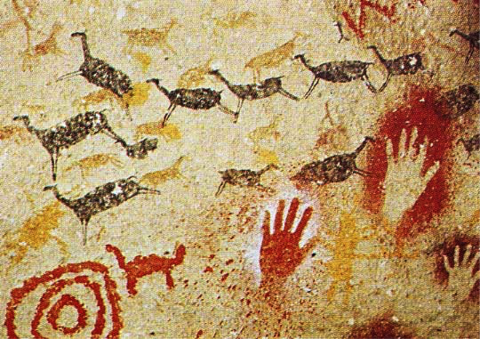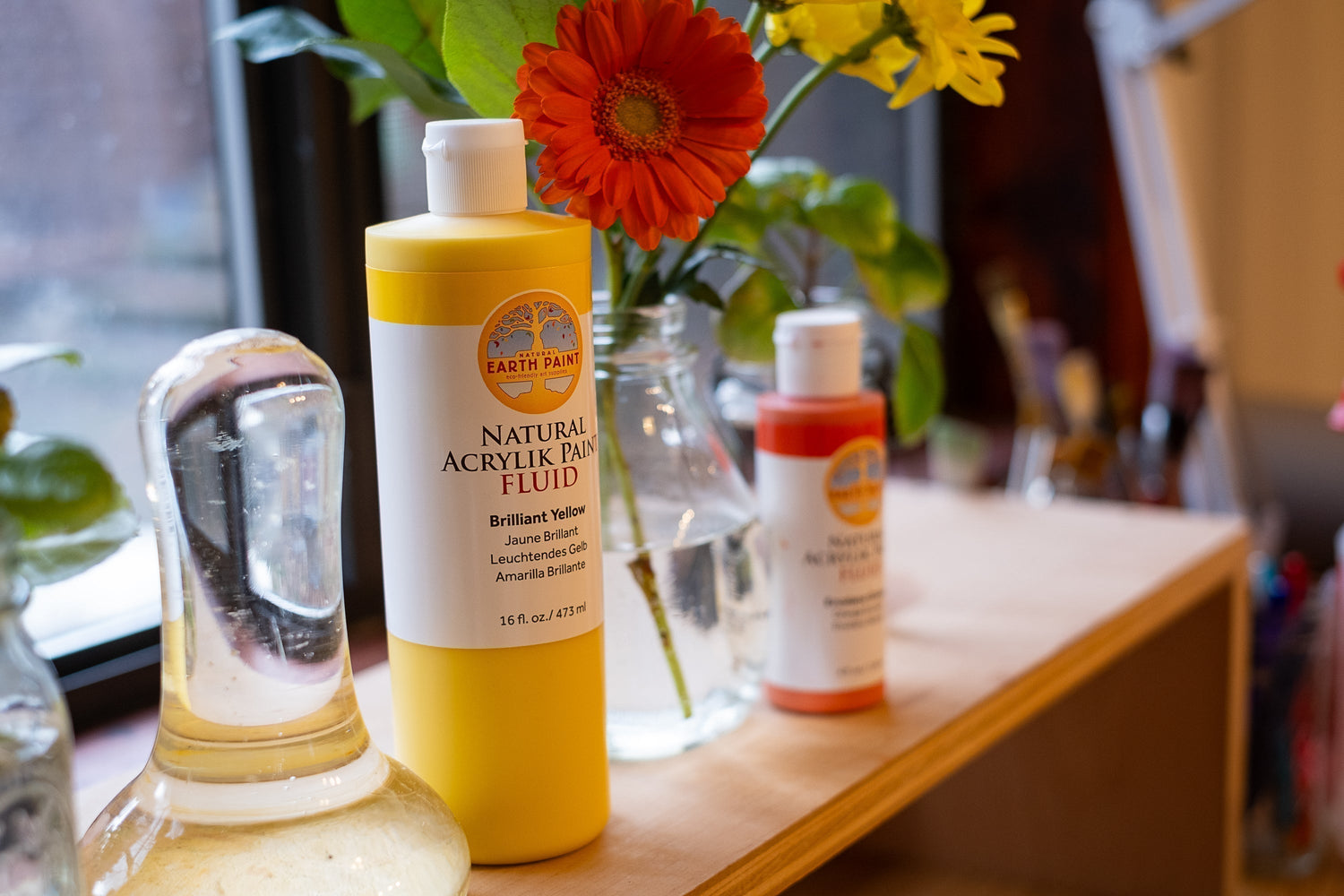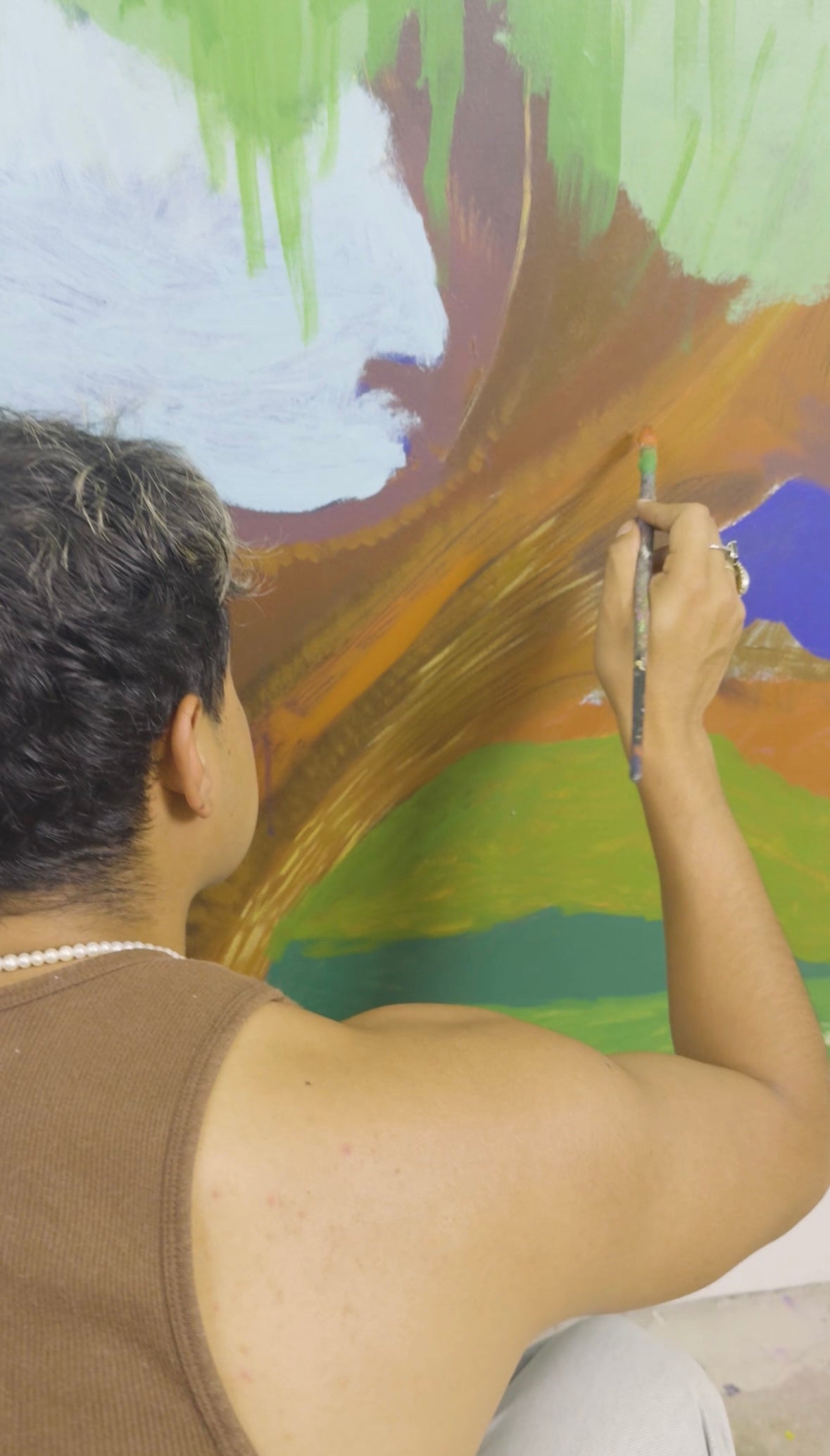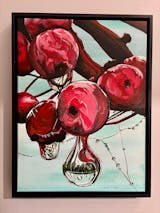Natural Earth pigments were the earliest recorded materials used by our ancient ancestors to make paint and various mediums. We can see artistic practices dating as far back as 500,000 years ago by Homo Erectus, our ancient ancestors.
The oldest cave painting known today is from El Castillo, in Northern Spain and stands as a symbol of our human evolution and the beginning of the natural art movement. Most people don’t realize the scale and intensity of these cave paintings but you can start to understand in the photo below of the Altamira caves. Archaeologists have discovered that the Altamira cave painters were the only ones who used powdered fossil amber as the binder for their natural paints.

Prehistoric artists used natural pigments that were found nearby in the Earth such as limonite and hematite (reds, orange, yellows and browns), greens from oceanic deposits, blues from crushed stones and manganese ore, charcoal from the fire and white from ground calcite or chalk.

A recent discovery of a 100,000-year-old paint-making workshop was discovered in a South African cave a few years ago. The archeologists found hundreds of pieces of red ocher stone, special ocher grinding stones and tools made from animal bones. Large abalone shells were also found in the cave, which was situated near the Indian Ocean, were used to mix the paint. The pigments were mixed with natural binders to make paint. These binders were made from vegetable juices, plant oils, urine, tree sap, animal fat, bone marrow, blood, and albumen.
The most famous cave paintings at Lascaux were studied and tested for 3 years by Claude Couraud. He discovered that the binder they used was simply cave water which was really effective because it was rich in calcium carbonate.
These natural colors from the Earth would stand the test of time even with the ever changing environment. Recent discoveries have shown that the artists would travel up to 25 miles in order to harvest a solid supply of Earth pigments for their creations. Keeping in mind the extremely hazardous conditions under which early humans lived and their short life span, painting must have been extremely important. They painted not only their walls and ceilings but also their tools, clothing and bodies. They were innovative, using twigs to produce drawn or linear markings, collecting feathers to unify areas of pigment and constructing brushes from animal hair.
There are three theories about why so much precious time and energy was expended this way. #1. For pleasure or to tell a story #2. “Sympathetic hunting magic”- based on the belief that to paint a picture of a successful hunt helps to achieve it in actuality. #3. Artistic Symbolism- to represent the unknown, the natural and supernatural forces. I personally think that it was probably a combination of all three but primarily number 2. I bet they were masters of the law of attraction and created their reality with their drawings. What do you think?

Today, Natural Earth Paint is devoted to utilizing our old ways of creation and continuing their journey for beauty and durability using naturally non-toxic ingredients and the most archival paint on the planet. We offer a selection of safe and professional quality natural Earth paints as an acknowledgement to all the ancient seeking painters who came before us and started an artistic revolution that should never be forgotten.
Interested in learning more about Natural Earth Paint history? Visit our History page!
Follow us on Instagram, Facebook, and Pinterest for more natural inspiration.







